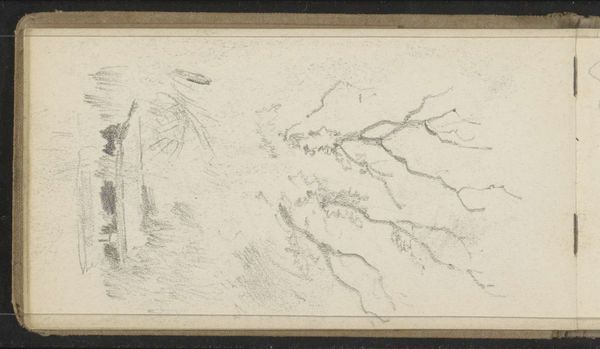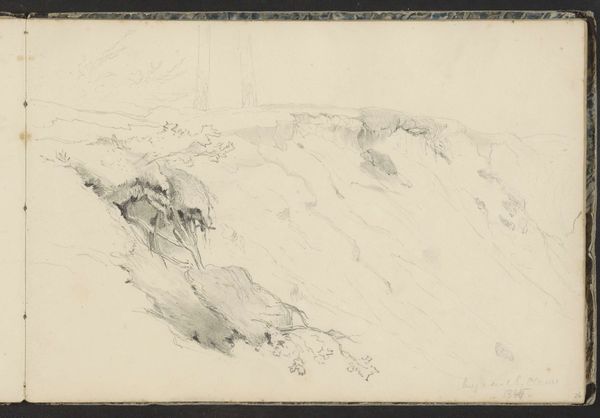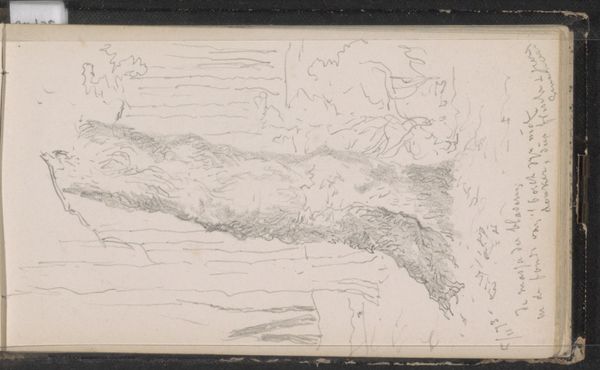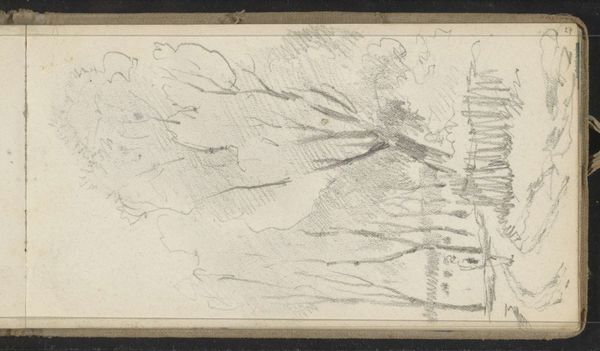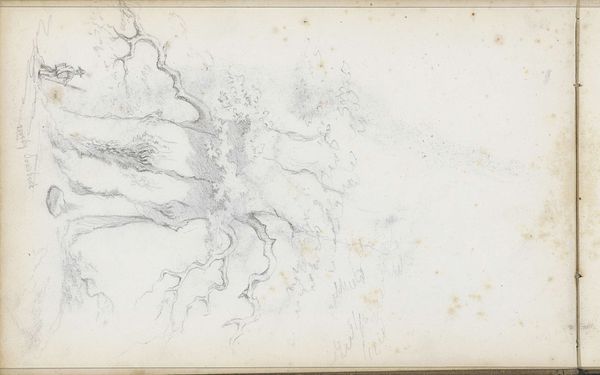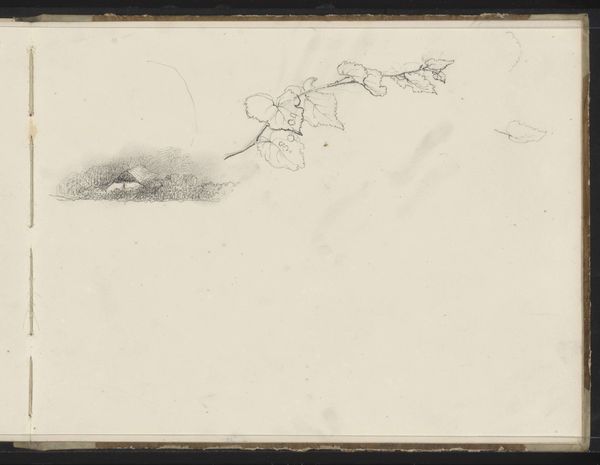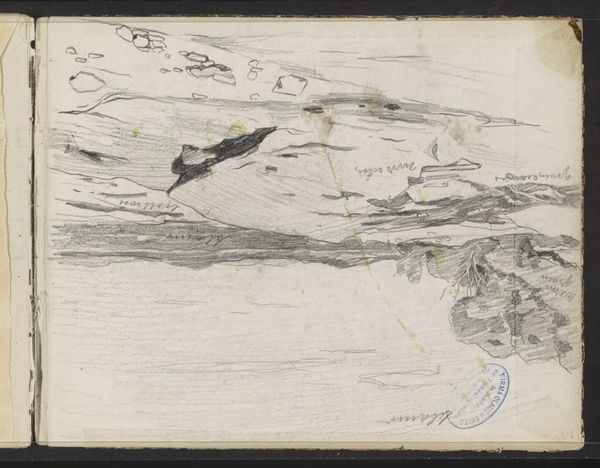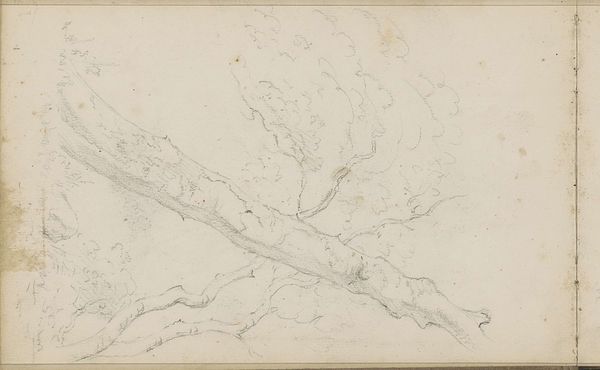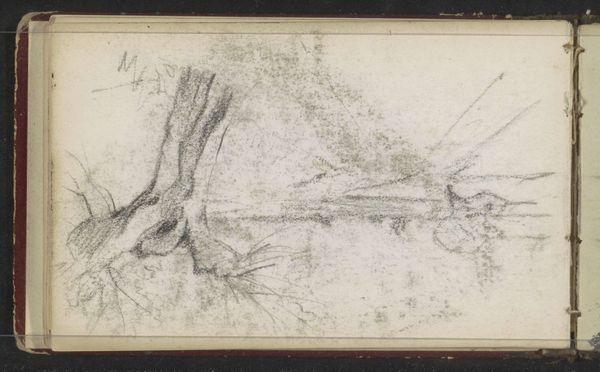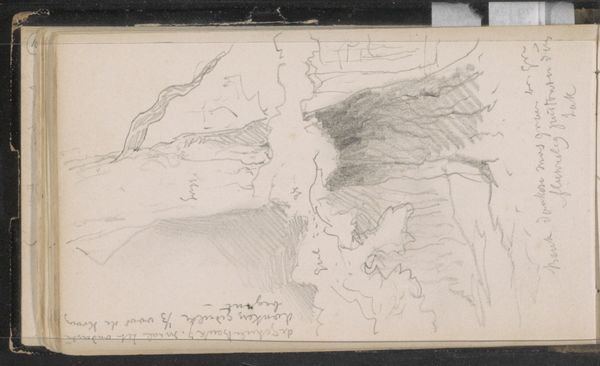
drawing, pencil, graphite
#
drawing
#
landscape
#
pencil
#
graphite
#
mixed medium
#
mixed media
#
watercolor
#
realism
Copyright: Rijks Museum: Open Domain
Editor: So, here we have Anton Mauve's "Landschap," created sometime between 1848 and 1888. It’s a pencil and graphite drawing, a very simple landscape. It feels quite melancholic to me, stark almost. What do you see in this piece? Curator: The bareness speaks volumes, doesn't it? Notice the strategic use of negative space – it isn’t merely emptiness, but an active element, shaping how we perceive the solid forms. That lone tree trunk, for example; it’s a rather potent symbol. Trees, across cultures, often represent resilience, growth, a connection between the earthly and spiritual realms. Editor: Resilience in a melancholic landscape? Curator: Exactly. It’s about enduring, continuing to exist, despite a certain bleakness. Think about the historical context. The mid-19th century was a time of massive social and economic change. Industrialization was reshaping the world. Consider this tree as standing against that tide, representing nature holding firm in the face of relentless progress. Do you think that contrast speaks to you? Editor: I hadn’t thought about it that way, but the loneliness of it all makes more sense now. It's like a memory of something that is fading. Curator: Yes! And that memory carries weight. This isn't just a pretty picture; it's a cultural artifact imbued with meaning, touching on our shared anxieties about loss and change. Editor: So much in just a simple drawing... it definitely gives me a lot to think about. Thanks for helping me unpack all that. Curator: My pleasure. It’s in these quiet landscapes that we often hear the loudest echoes of the past.
Comments
No comments
Be the first to comment and join the conversation on the ultimate creative platform.


